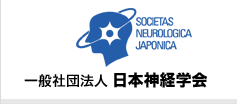- HOME
- Vol.58 No.2
- CLINICA NEUROL, 58: 88−92, 2018
- Vol.58 No.2 contents
Case Report
A case of severe obstructive sleep apnea mimicking REM sleep behavior disorder
Yoko Fujii, R.P.S.G.T.1), Mutsumi Okura, M.D., Ph.D.1), Hidekazu Uemori, M.D.2), Mitsutaka Taniguchi, M.D.1) and Motoharu Ohi, M.D., Ph.D.1)
1)Sleep Medical Center, Osaka Kaisei Hospital
2)Sleep Disordered Breathing Center, Saiseikai Nara Hospital
The rapid eye movement (REM) sleep behavior disorder (RBD) is a parasomnia characterized by dream-enacting behaviors related to the loss of the normal generalized skeletal muscle atonia during REM sleep, and shows REM sleep without atonia (RWA) during polysomnography (PSG). Patients with idiopathic RBD have been known to have a siginificantly increased risk of developing one of the α-synucleiopathies later in life, therefore the diagnosis of RBD is very important and must be dealt with carefully. A 51-year-old man was identified presenting dream-enacting behaviors and unpleasant dreams suggesting the diagnosis of RBD, in addition to snoring and excessive daytime sleepiness. Attended video-PSG excluded RBD showing REM sleep with atonia and without increased phasic EMG activity, and diagnosed with severe obstructive sleep apnea (OSA) with an apnea-hypopnea index of 30.1 demonstrating that the reported abnormal sleep behaviors occurred only during respiratory event-induced arousals. Continuous positive airway pressure therapy eliminated the abnormal behaviors, unpleasant dreams, snoring and daytime hypersomnolence. This case shows that severe OSA mimic the symptoms of RBD and that attended video-PSG is necessary to establish the diagnosis of RBD, and identify or exclude other causes of dream-enacting behaviors.
Full Text of this Article in PDF (2565K)
(CLINICA NEUROL, 58: 88−92, 2018)
key words: REM sleep behavior disorder, obstructive sleep apnea, REM sleep, attended video-polysomnography, REM sleep without atonia
(Received: 29-Apr-17)


